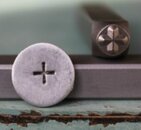Ted Judah
Contributor
A year ago, I bought tanks for my wife and I. In that year we have used them on 16 dives and had them filled at 5 different dive shops. The pressures after each fill seem to vary wildly and is often overfilled.
Here are the markings on the tanks:
FABER MADE IN ITALY M8303 21/0154/ 073 02•21+
TC - 3AAM - 184/DOT - 3AA2400 DO NOT OVERPRESSURIZE REE67 BS85S
Below are the start fill pressures for each dive:
2400 lbs.
3400 lbs.
2600 lbs.
2500 lbs.
2500 lbs.
2500 lbs.
2200 lbs.
2800 lbs.
2800 lbs.
2800 lbs.
2950 lbs.
2400 lbs.
3000 lbs.
2750 lbs.
3250 lbs.
3525 lbs.
Am I missing something? should I be concerned? Should I request a certain pressure from dive shops?
Here are the markings on the tanks:
FABER MADE IN ITALY M8303 21/0154/ 073 02•21+
TC - 3AAM - 184/DOT - 3AA2400 DO NOT OVERPRESSURIZE REE67 BS85S
Below are the start fill pressures for each dive:
2400 lbs.
3400 lbs.
2600 lbs.
2500 lbs.
2500 lbs.
2500 lbs.
2200 lbs.
2800 lbs.
2800 lbs.
2800 lbs.
2950 lbs.
2400 lbs.
3000 lbs.
2750 lbs.
3250 lbs.
3525 lbs.
Am I missing something? should I be concerned? Should I request a certain pressure from dive shops?






